The Best from Sharjah Biennial 16: An On the Ground Guide
By Keshav AnandThe morning sun is bright but I’m surprised by how cool the air is. Arriving early at Al Mureijah Square, I realise I’m underclad for my first tour of Sharjah Biennial 16 (SB16). Titled to carry, the Biennial presents over 650 works by nearly 200 artists, including Alia Farid, Citra Sasmita, and Himali Singh Soin. Thankfully, shortly before noon, the day begins to warm up. Co-curated by Alia Swastika, Amal Khalaf, Megan Tamati-Quennell, Natasha Ginwala, and Zeynep Öz, SB16 explores what we carry—physically, emotionally, and historically—through a discursive lens shaped by myriad voices. Spanning 17 venues across the Emirate of Sharjah, the ambitious programme unfolds through exhibitions, performances, music, and film. With so much to see and experience, Something Curated has compiled a concise guide highlighting 12 standout projects not to be missed.
Monira Al Qadiri
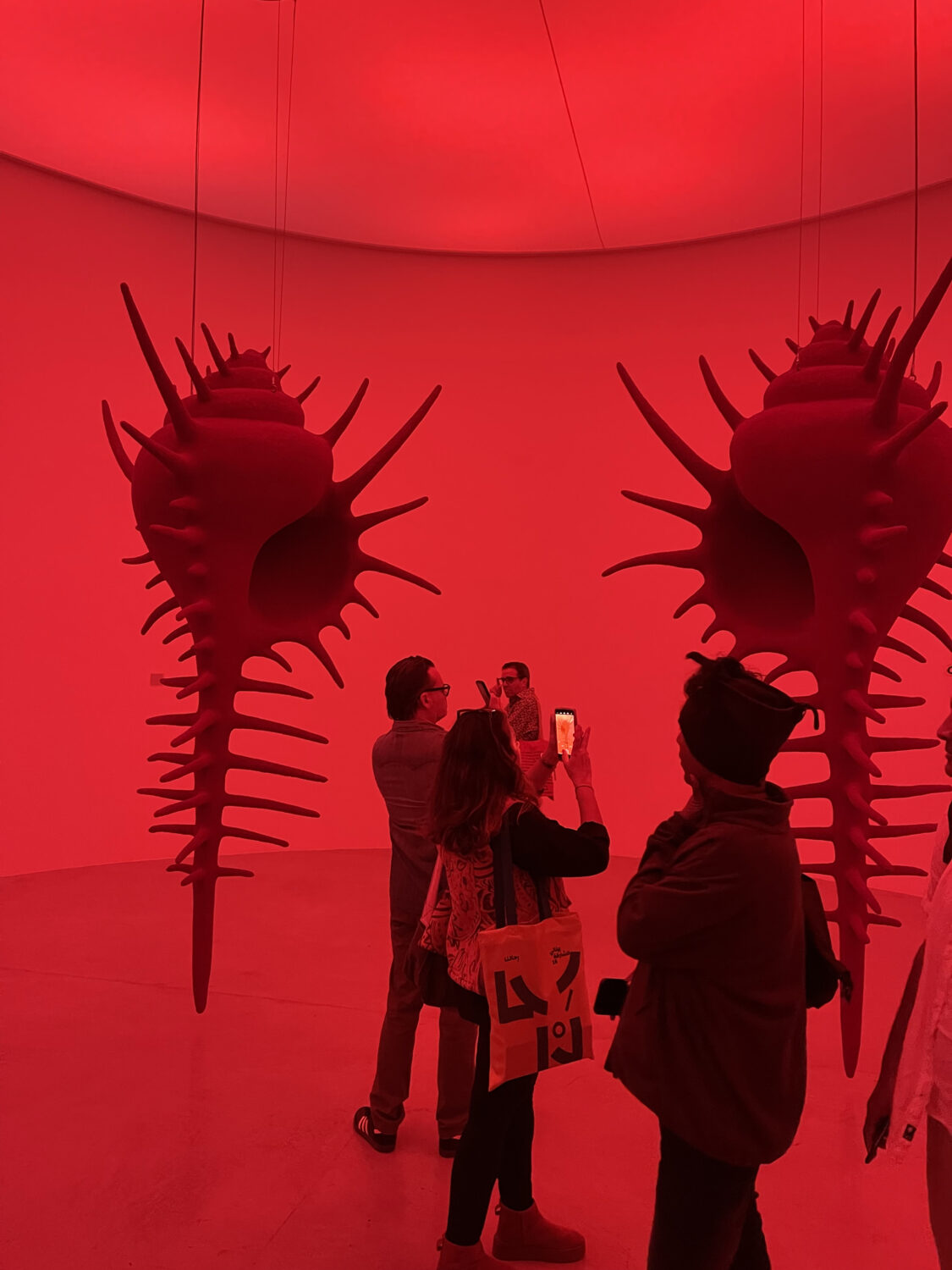
A queue forms outside a circular room glowing red. I wait in line, my curiosity mounting listening to fellow exhibition-goers’ reactions upon exiting the concealed space. In Gastromancer (2023), Dakar-born Kuwaiti artist Monira Al Qadiri suspends two large red fibreglass murex shells, their inner cavities emitting dialogue. You need to stand between them to really hear. The shells recount their unintended shift from female to male due to industrial pollution—specifically, tributyltin (TBT), a toxic red paint used on oil tankers. This transformation renders them infertile, threatening their species. Drawing from Thani Al Suwaidi’s writings, Al Qadiri’s work articulately, and poetically, critiques ecological harm driven by relentless resource extraction.
Hugh Hayden
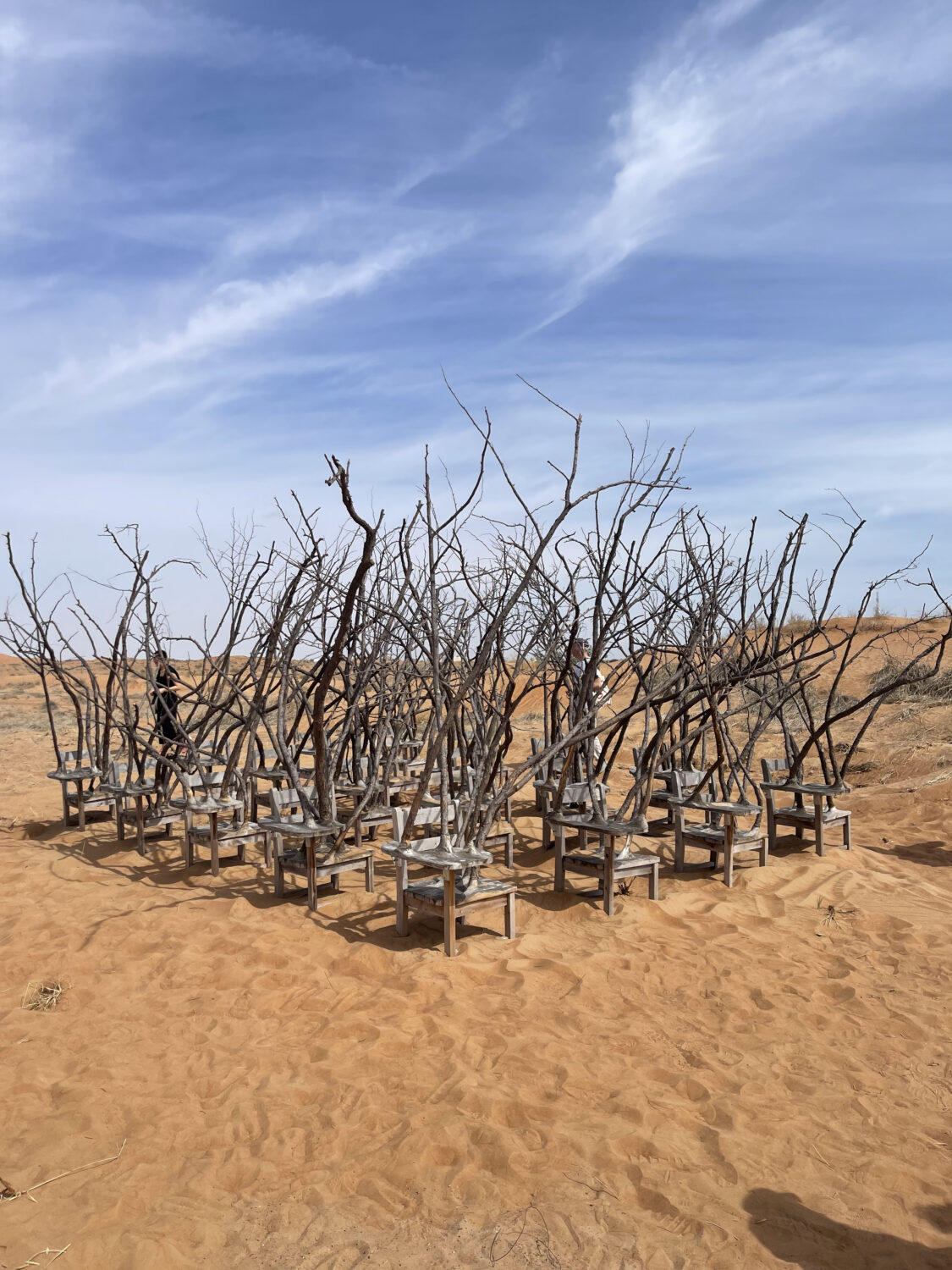
An hour’s drive from Sharjah’s urban centre, the Al Madam Buried Village emerges from the desert, where Hugh Hayden’s Brier Patch (2022) stands among the sand-filled shells of former dwellings. The installation features a grid of school desks, each erupting with tangled cedar branches. Inspired by the African American folktales of Br’er Rabbit, and the artist’s own lineage of educators, Hayden reimagines the classroom as a site of constraint and struggle. Broaching issues of systemic exclusion and cultural assimilation, the work probes tensions of social mobility in America.
Hylozoic/Desires (Himali Singh Soin and David Soin Tappeser)
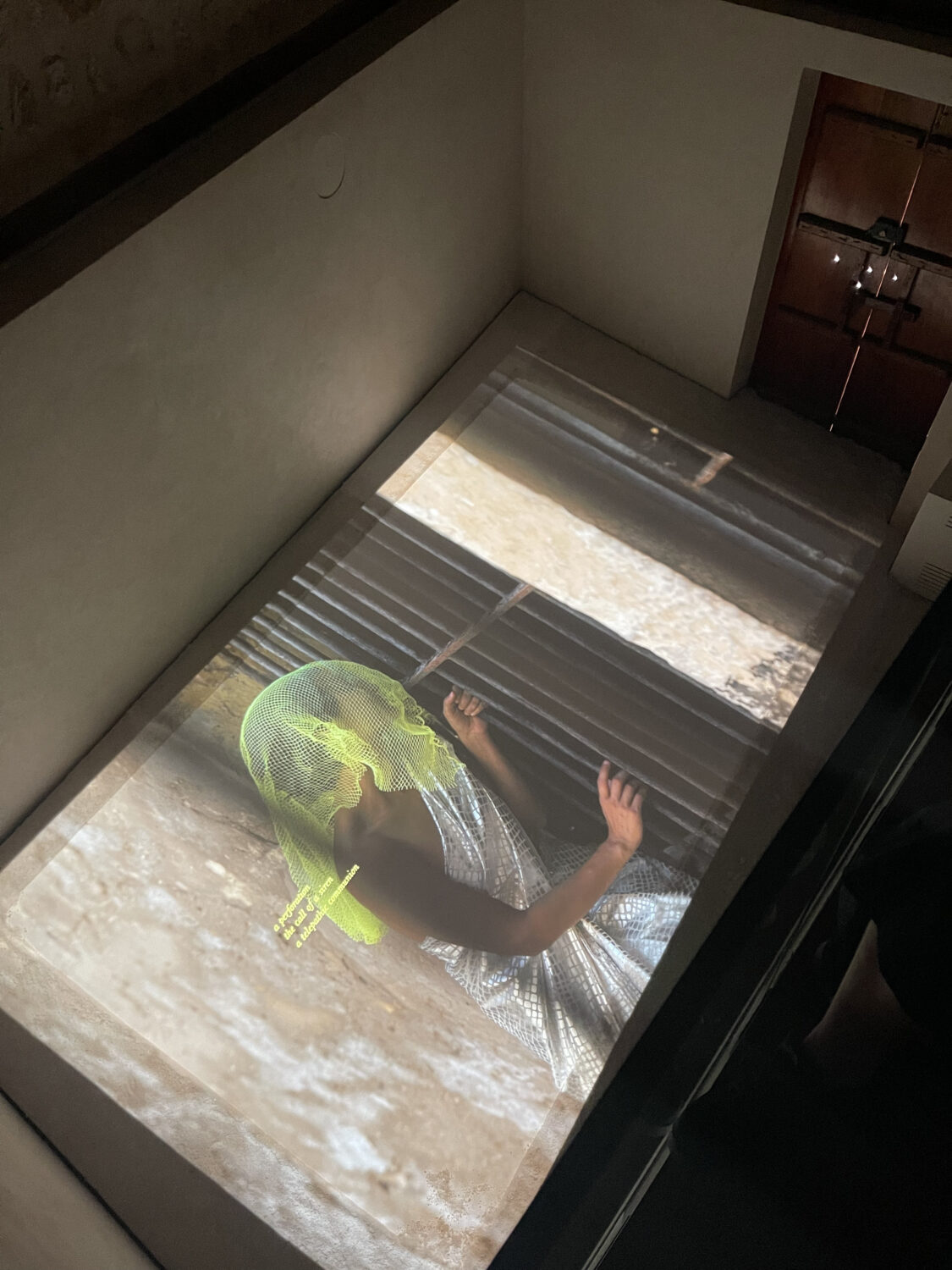
Walking through Sharjah’s Arts Square, I don’t initially notice a small and newly planted hedge sprouting between the cobblestones—only later does its significance become clear. The Hedge of Halomancy (2025), a film by Hylozoic/Desires (Himali Singh Soin and David Soin Tappeser), explores the vanished Great Indian Hedge—a 4,000-km thorny barrier erected by the British in the 1800s to enforce a salt tax. Combining historical records with fiction, it follows Mayalee, a tawaif who resists through salt-based divination. Alongside the film, with no visual record of the hedge surviving, the artists have created six fascinating images of this vast living wall with the assistance of AI.
Jorge González Santos
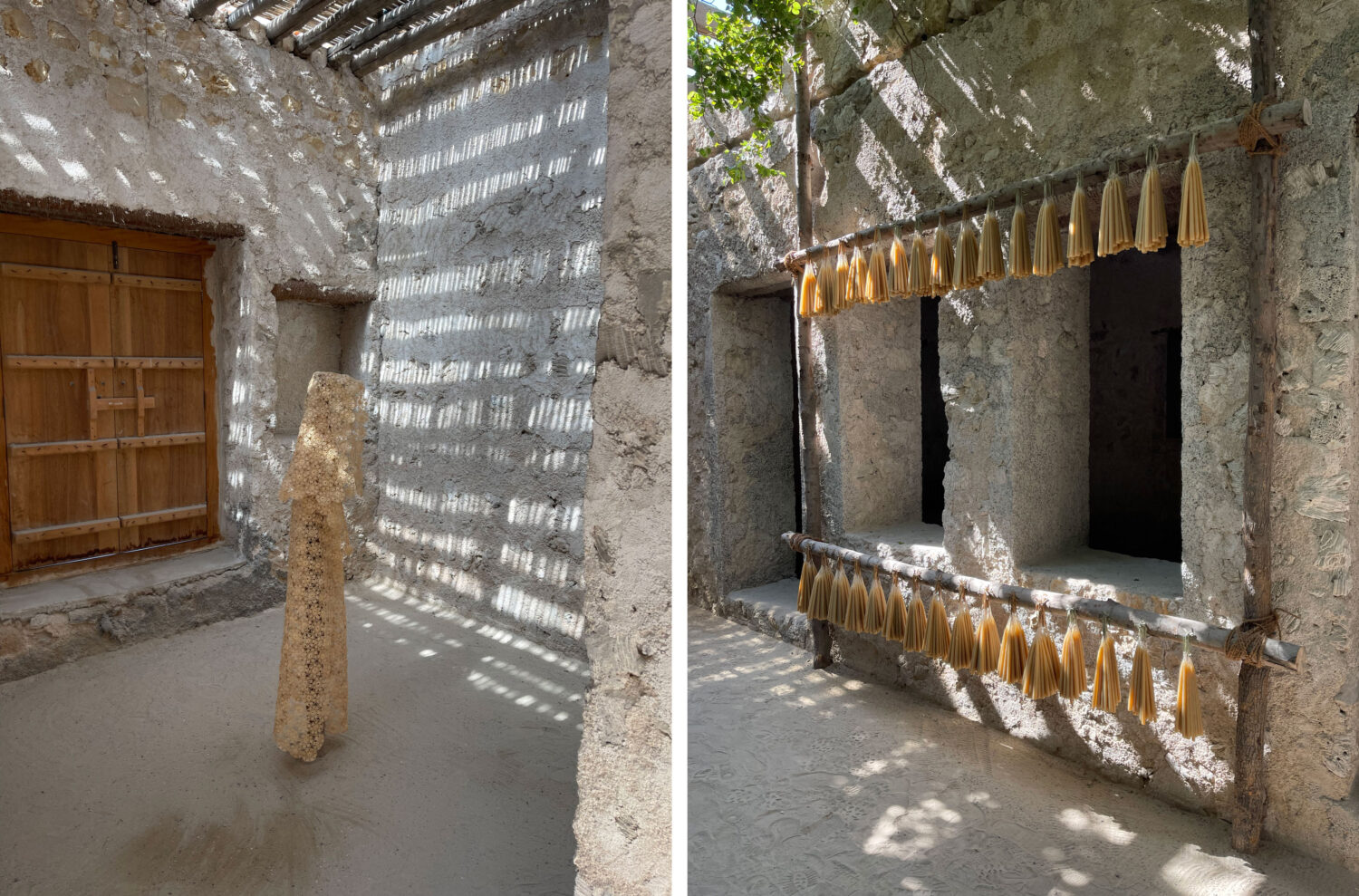
Dappled sunlight seeps through the ceiling and walls while the scent of smoke gradually intensifies. Inside, beeswax candles hang in dense clusters along the walls. A woman dips wicks into molten wax, continuously making more. Through apprenticeship and self-organised learning, Jorge González Santos revives Taíno ancestral knowledge in Jatibonic (People of Sacred High Waters) (2024–2025). Fire anchors the space, supporting communal candle-making and pottery crafted with Taller Cabachuelas, an Indigenous multidisciplinary studio. Taíno figures stand alongside woven rushes and ceramic thorns—symbols of resilience, ceremony, and cultural restoration.
Anga Art Collective

Founded in 2010, Assam-based Anga Art Collective creates works reflecting northeastern India’s shifting landscapes. Storage of the Broken Times-Ig Ritu (2024), installed in Sharjah’s Old Al Jubail Vegetable Market, forges a dialogue between Sharjah, Assam, and Bihar. At its core is a round, airy structure for community gatherings, surrounded by installations—including The Full Moon (2022), a video on human-elephant connections. The collective has transformed the market into a spiritual space, evoking India’s seasons and the evolving lives of agrarian communities facing climate change.
Fatma Belkıs
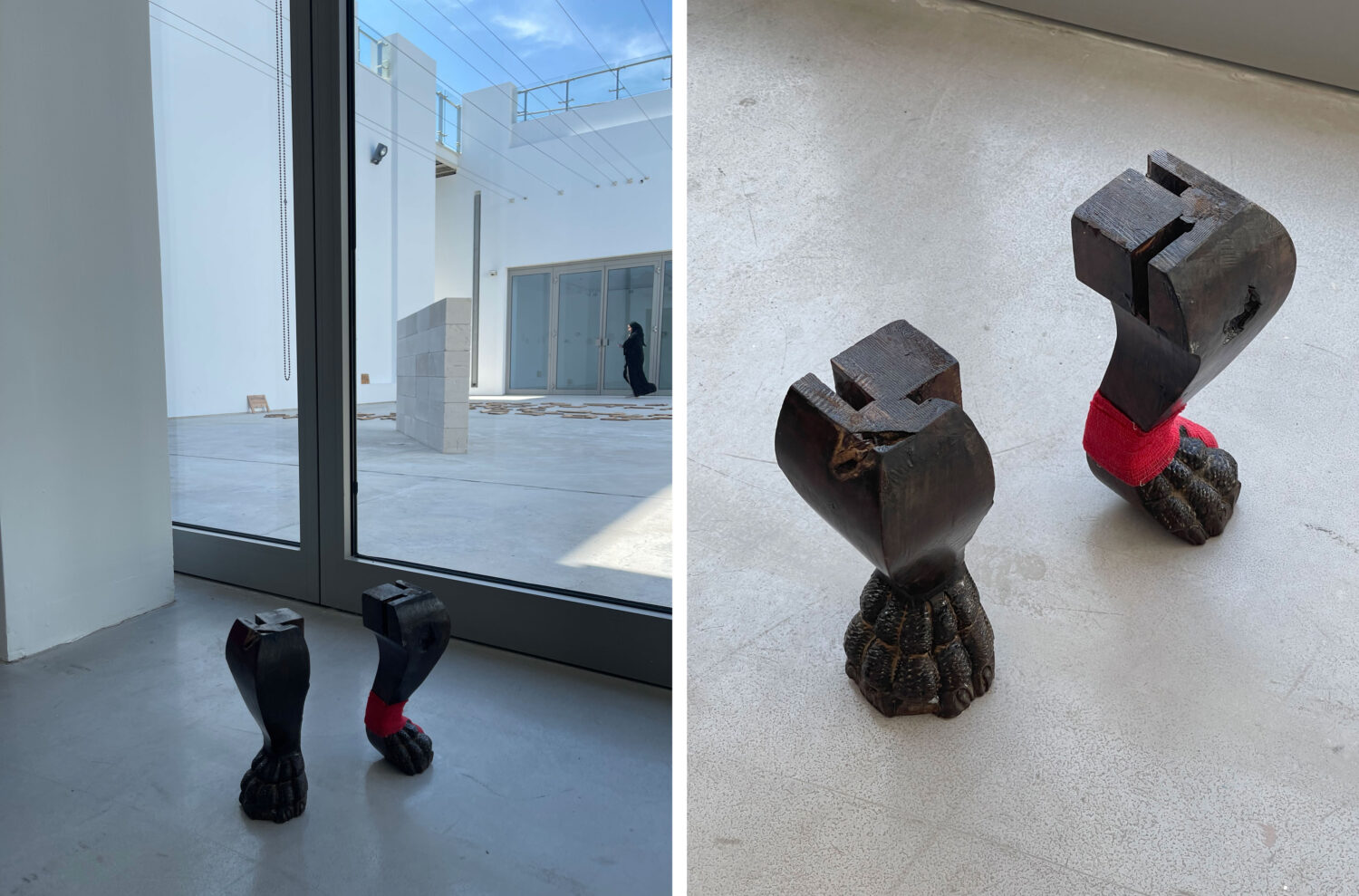
Istanbul-based Fatma Belkıs’ practice spans text, video, and sculpture, exploring themes of conflict, negotiation, failure, and the fragile nature of friendship. Among the three works shown by the artist, My Broken Hand (2023) features two wooden legs with clawed feet from a discarded piece of furniture, one wrapped in a red bandage. The piece serves as a self-portrait. In early 2023, Belkıs broke her left hand after slipping on wet cobblestones. Her limb remained in a cast, and then elastic bandages, for months while she worked on the exhibition. The artist explains: “The break, the cast and the healed bone are placeholders for the memories from childhood that shape hard-to-change definitions of friendship, betrayal, and competition.”
Stephanie Comilang
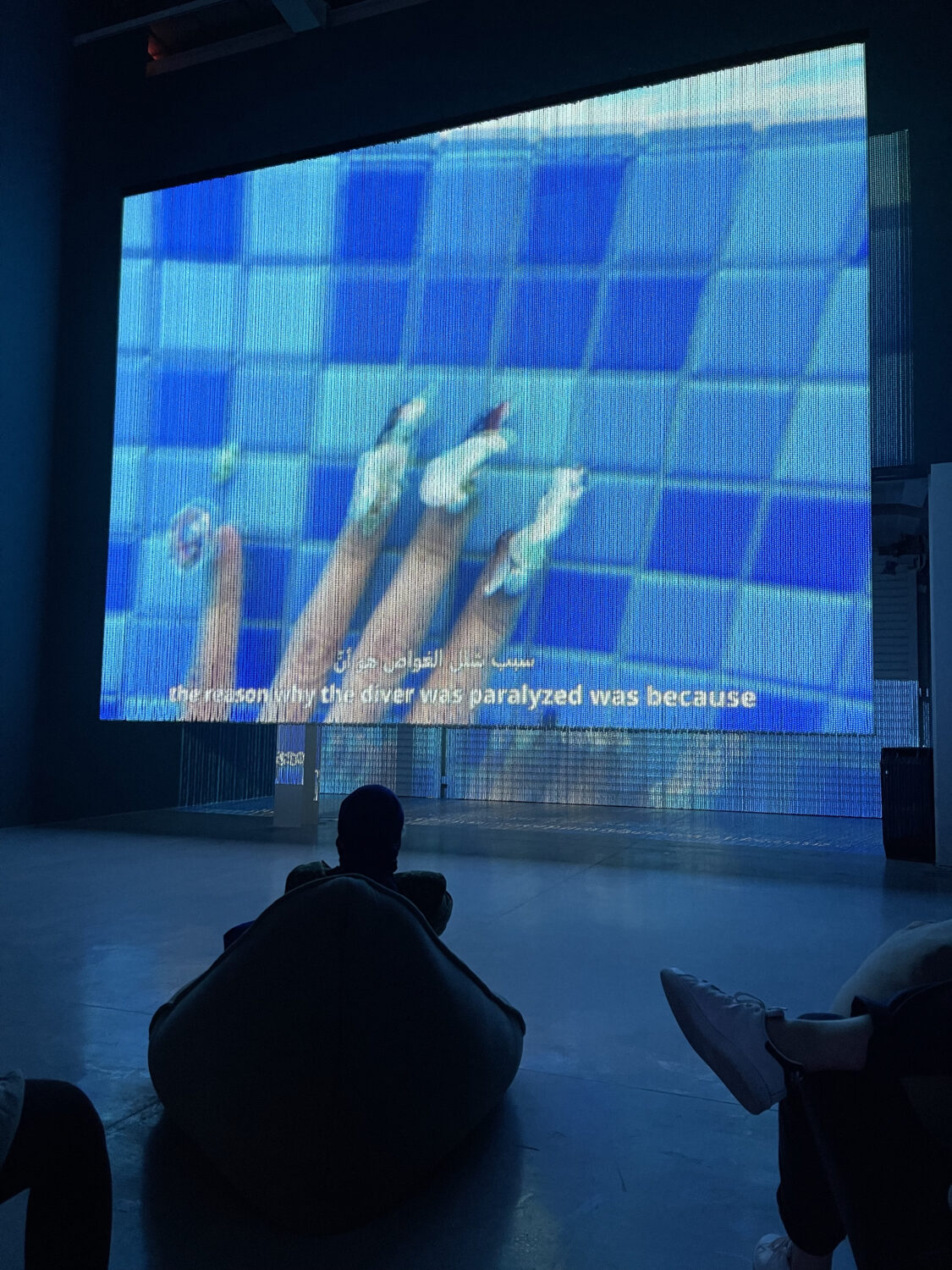
Strings of pearls, precisely suspended next to one another, form a projecting screen. The glistening white spheres become pixels. Stephanie Comilang’s Search for Life II (2025) explores histories of pearl diving and industrial production between the Arabian Gulf, the Philippines, and China. The artist’s installation combines narratives from historic pearl diving sites with live-streamed footage from Chinese pearl markets, scored by a soundtrack that highlights the importance of song in maritime labour. In Comilang’s work, as in life, the pearl acts as both currency and symbol, bridging cultures and smudging boundaries between past and future.
Joe Namy
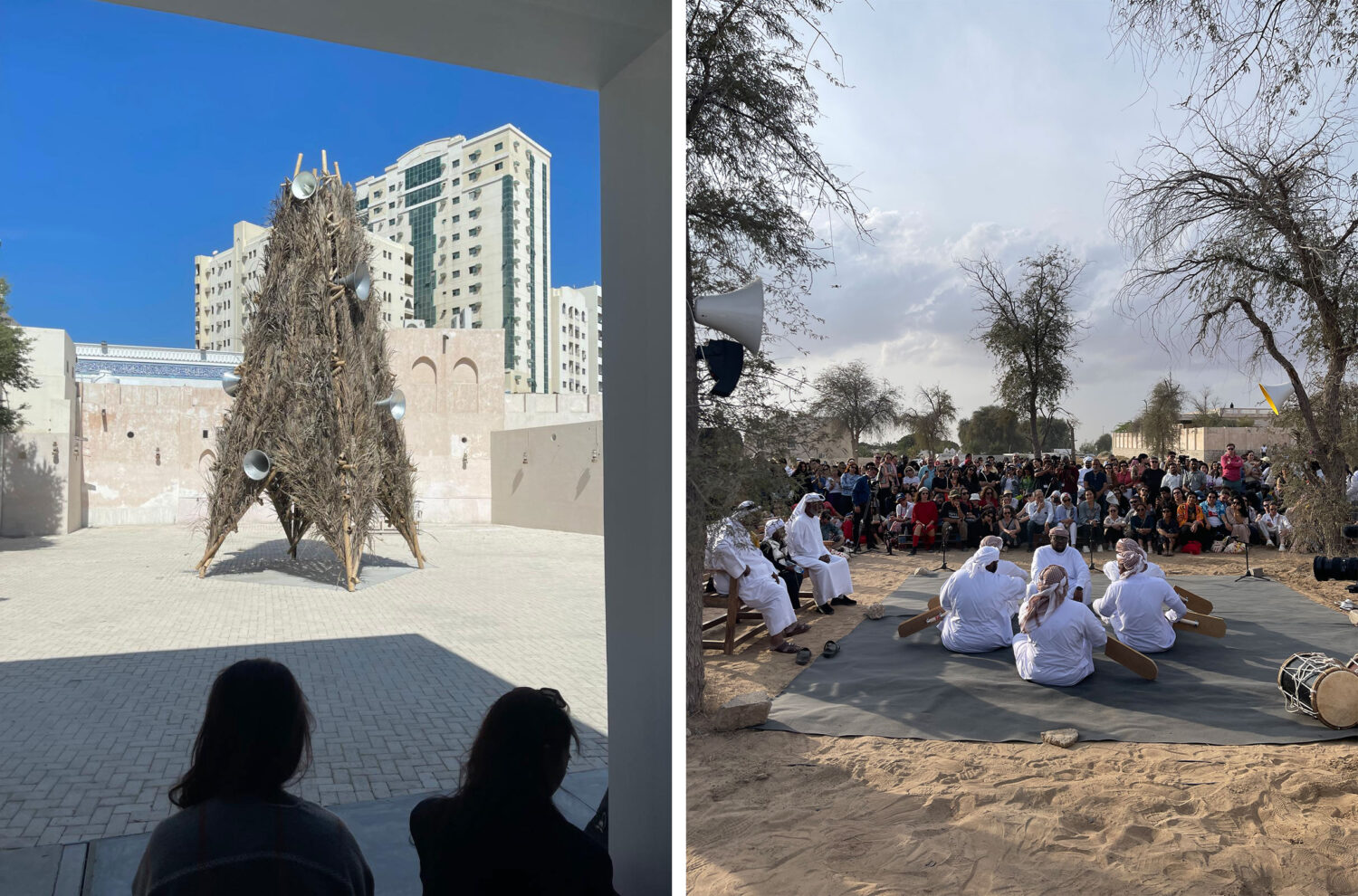
One of the first works I encountered in Sharjah was Joe Namy’s towering sculpture, Dub Plants (2024–2025). And even after a week of seeing some 600 works, this piece remained on the top of my mind. Namy, an artist, composer, and educator, examines the link between radio culture and agriculture. A bamboo radio tower with speakers plays a composition referencing key moments in radio history, from Marconi’s 1920 Thames Estuary broadcast to an early electronic piece capturing Egyptian healing chants via pirated radio. Later, in Al Dhaid’s desert oasis, as part of Farm Project—curator Zeynep Öz’s collection of six audio pieces—Namy led a live performance with musicians.
Rossella Biscotti
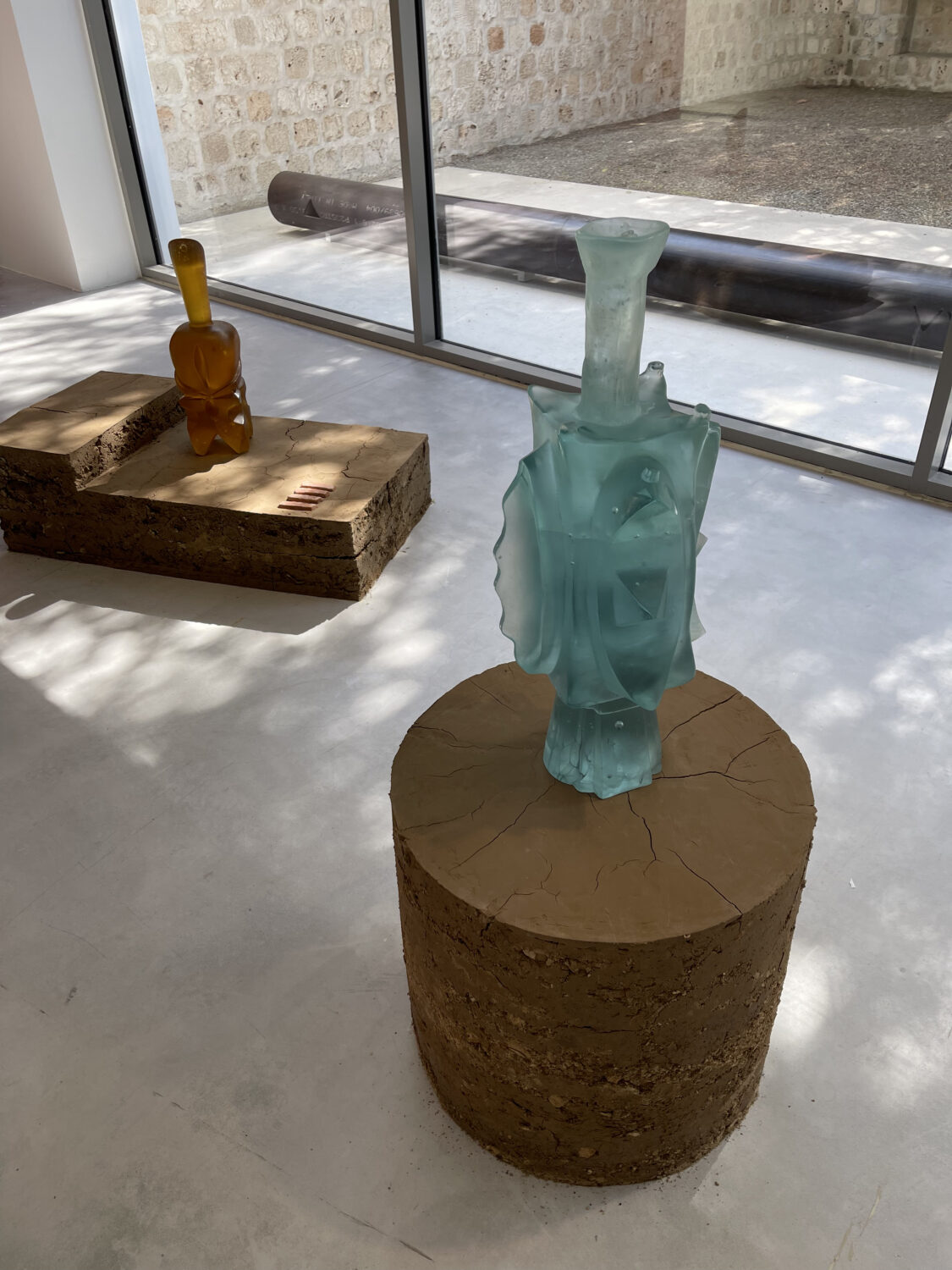
Rossella Biscotti’s latest projects delve into nature as both a resource and a battleground, examining themes of trade, colonialism, and migration. Saturated Salty Mud Stories (2025) amalgamates three bodies of work into a single installation. Circulations transforms oil and gas pipelines into sprawling sculptures, nodding to the UAE’s energy economy. Oil Vessels: Time Smuggling Geometry reimagines ancient Islamic oil and perfume containers in glass—perhaps the most compelling element of the presentation—while Sand Portables experiments with ceramics and glazes, developed with ceramist Maia Beyrouti using materials partially foraged in Sharjah.
Rajni Perera
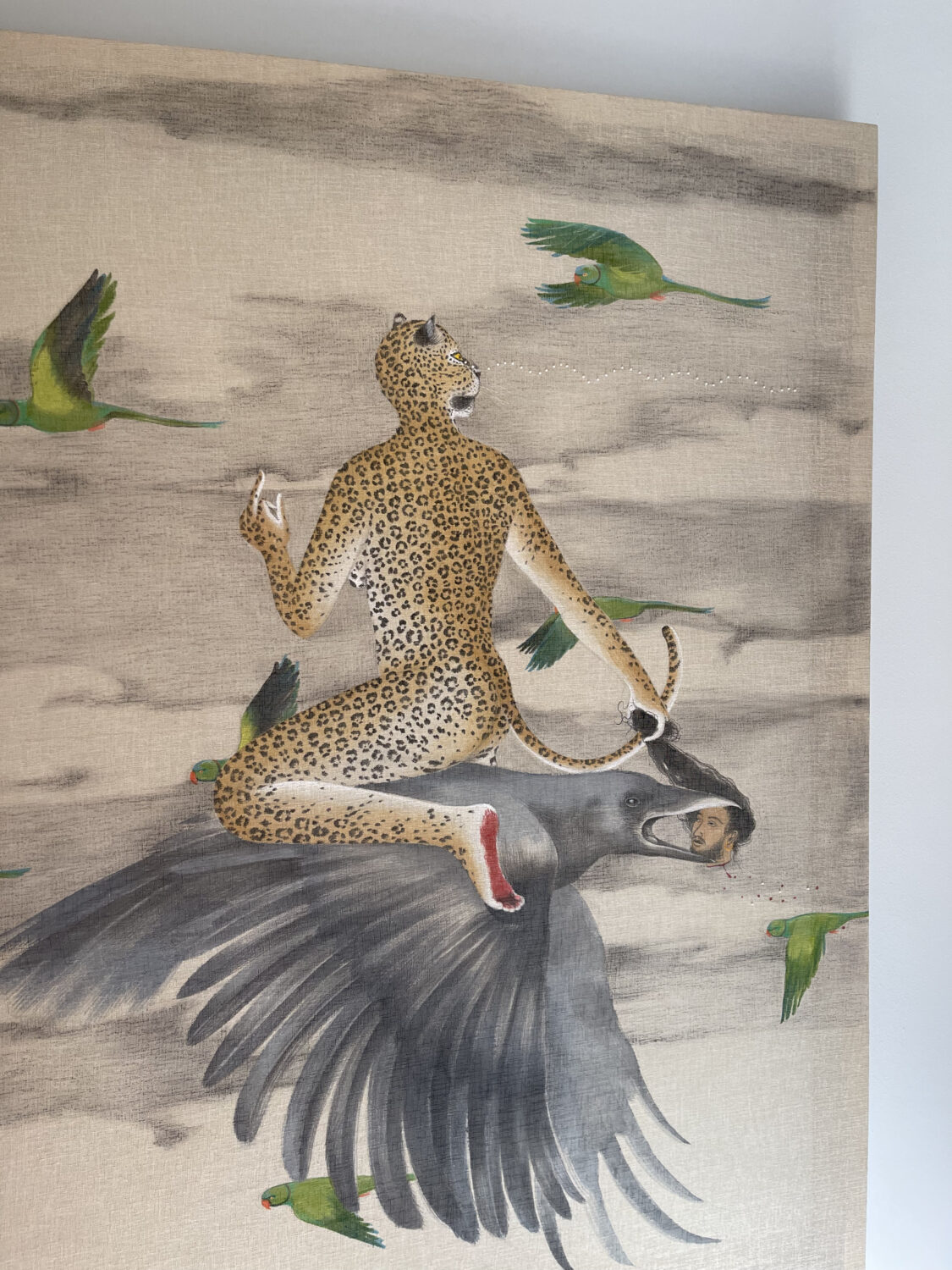
Weaving together speculative anthropology and ecological philosophy, Colombo-born, Toronto-based Rajni Perera envisions new worlds for displaced bodies. Utilising mineral, chemical, and organic materials, the artist forges a dialogue between nature and culture. Last autumn I came across images of her painting Lover Not a Fighter (2024) and became enamoured by the work, sharing it on Something Curated’s Instagram page. Seeing it in person was a revelation. Inspired by Yaku Tovil, a Sri Lankan ritual pushed to the margins by colonialism and caste divisions, the painting carries a resonance that felt even more powerful up close.
Michael Pareköwhai
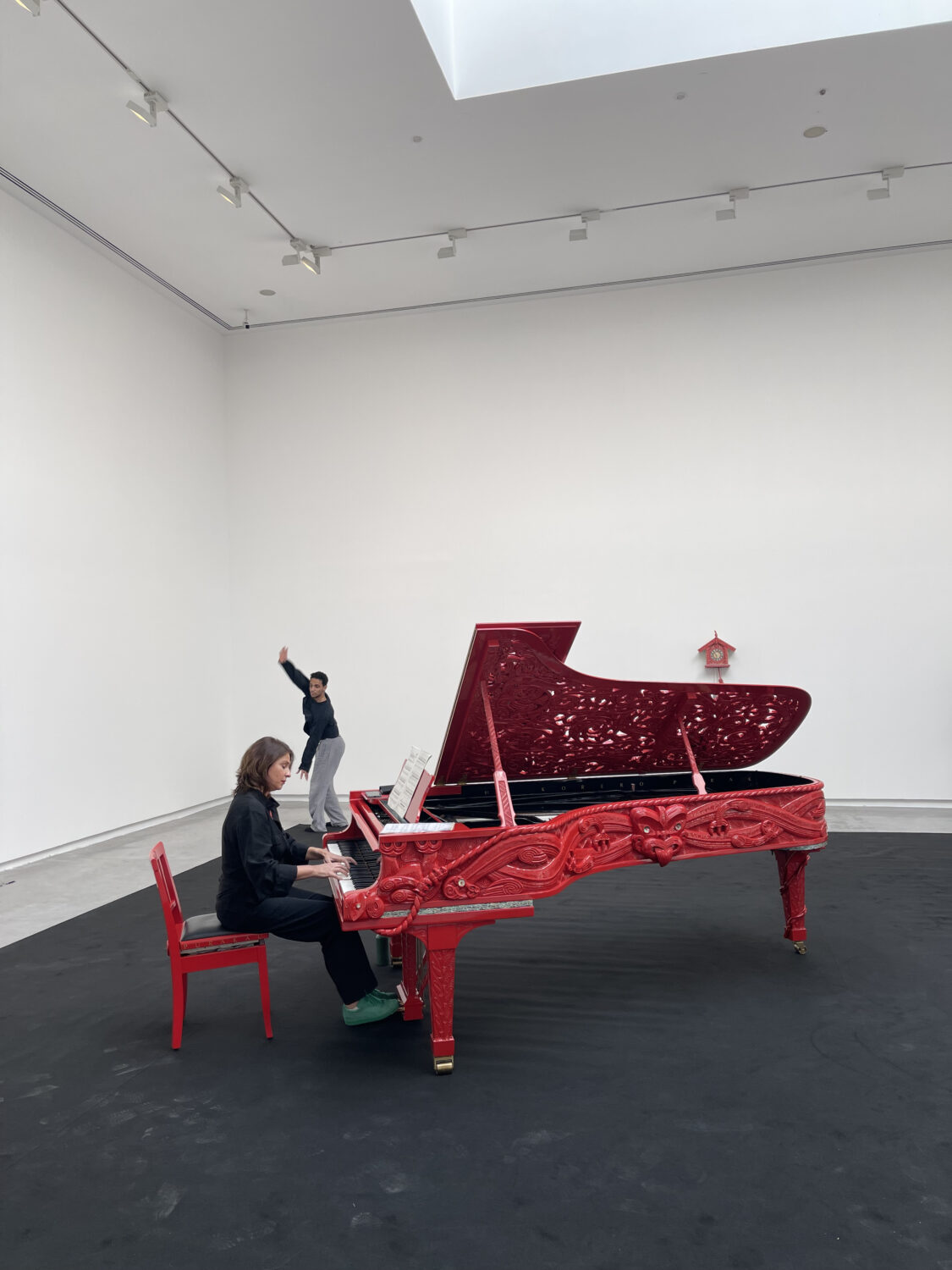
A crowd gathers around a striking red piano, its surface intricately carved. The instrument’s pearlescent eyes stare back at us. A pianist takes their seat on a matching red chair, while a series of ornate cuckoo clocks affixed on the room’s walls—also red and beautifully inlaid with mother-of-pearl—tick away like metronomes. And then, to add to the scene, a male dancer joins the production. Michael Pareköwhai, a conceptual artist from Aotearoa New Zealand, creates works that are rich in symbolism, blending personal, political, and ambiguous meanings. His practice spans bespoke musical instruments, Duchampian readymades, oversized toys, cast figures, taxidermy, and even entire houses—each piece a conundrum.
Raven Chacon
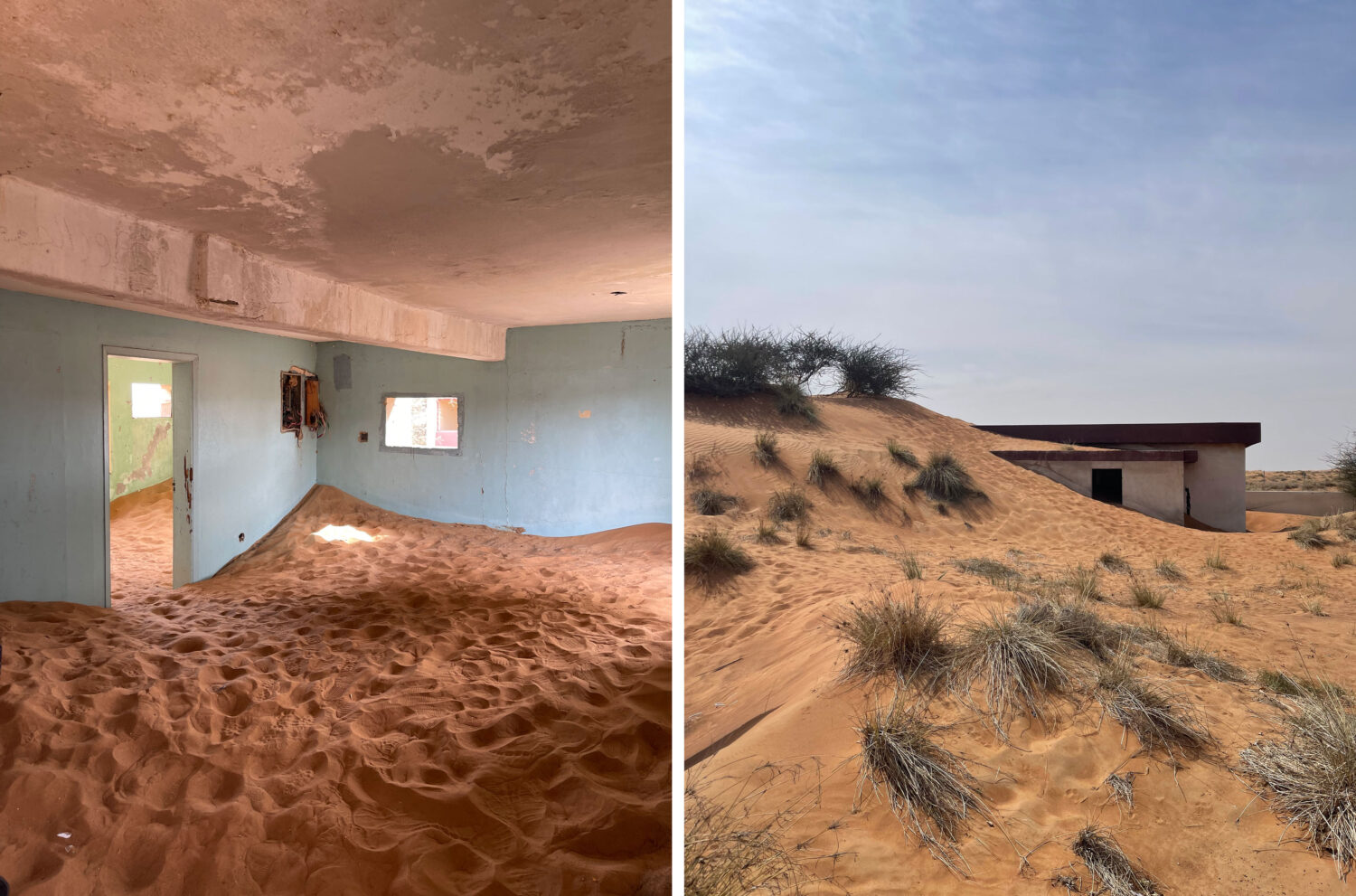
A Wandering Breeze (2025) is a sound installation by Diné composer and artist Raven Chacon. Created for the ghost town of Al Madam, the work responds to an uninhabited settlement built in the 1970s for local tribal people. Now appearing more like a Mike Nelson installation, the site, which also houses Hugh Hayden’s Brier Patch, was originally part of a government modernisation initiative following the unification of the Emirates. The abandoned settlement, comprising 12 residences and a mosque, has been reclaimed by the desert. Chacon’s composition carries the voices of Bedouin singers through the empty homes. The piece becomes an ode to Indigenous resilience, its melodies drifting through the forgotten village into the sands beyond.
Sharjah Biennial 16: to carry is on view until 15 June 2025 at venues across the Emirate of Sharjah.